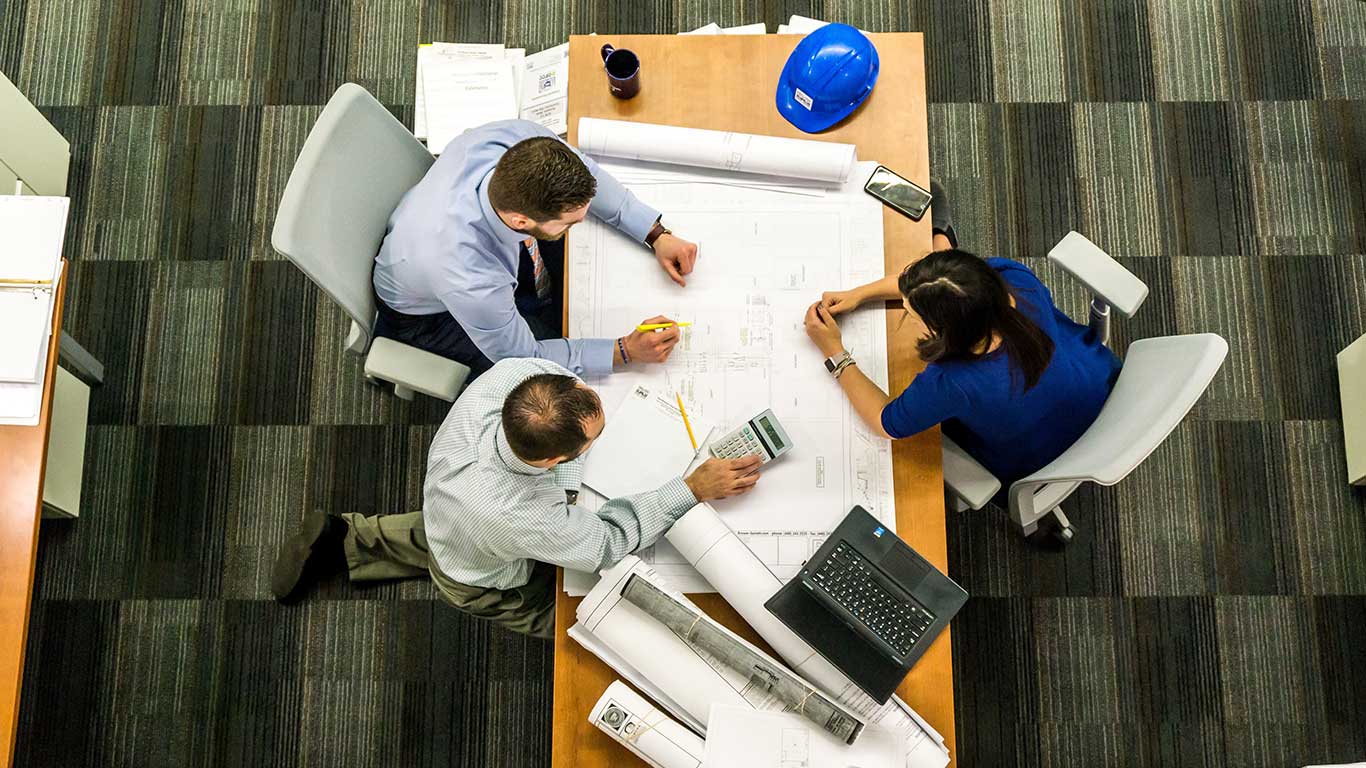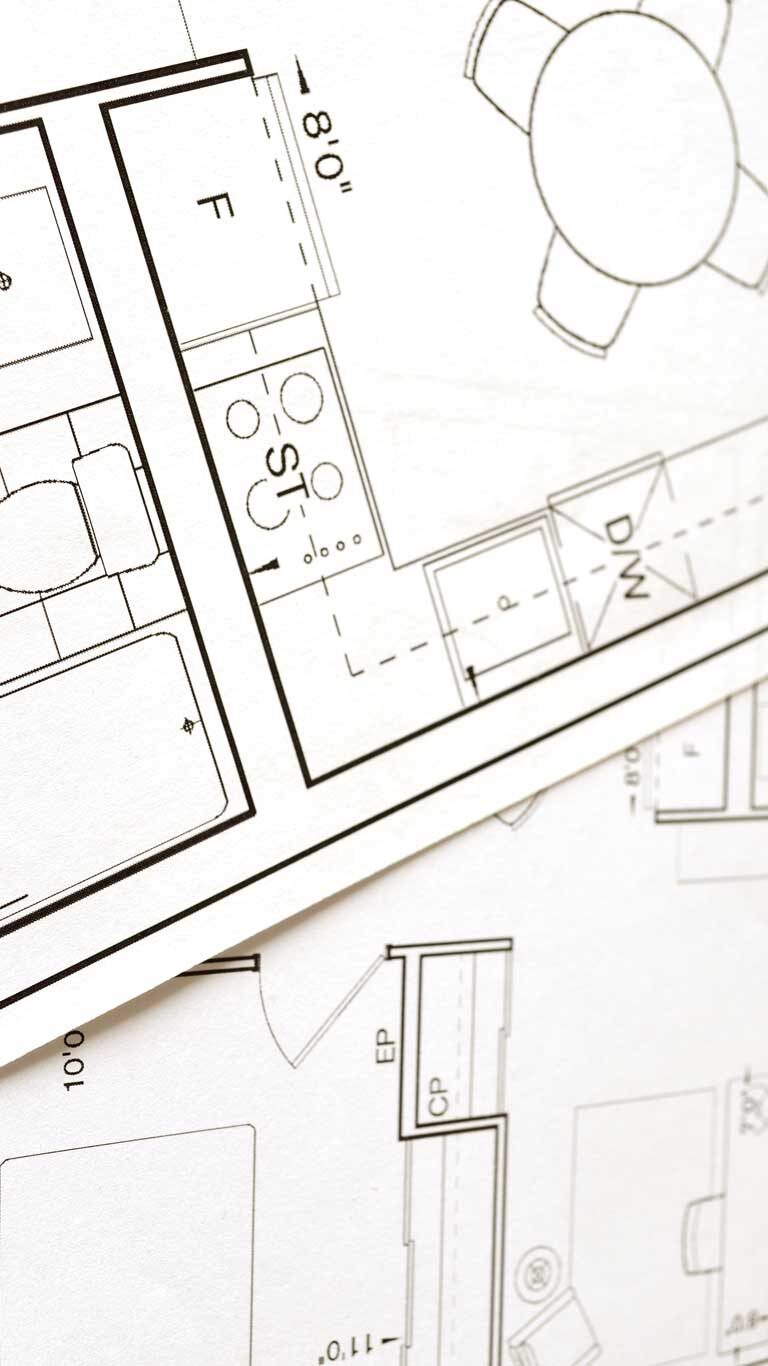Design/Build is one of several methods of arriving at the ultimate goal for a client wanting to build a custom home or renovate their existing one. A custom home or remodel, designed to meet their needs and desires, at a price that meets their budget, in a timeframe that meets their schedule.
Simply put, Design/Build is a one stop shopping approach to custom home building and renovations. The Design/Builder, taking the lead as project coordinator, is hired to manage the entire process. From conceptual design to detailed working drawings to construction to warranty, one entity is responsible to the Homeowner for the final product. This results in a seamless process and clear accountability by a single, qualified source.
This joining of design and construction means you can expect greater continuity of service, since one party is involved in the entire process and all communication is clear and consistent between the client and the design and construction team. In essence, the Homeowner is forming a “partnership” where their objectives are known and as a team all parties work together to attain them.
There are three ways in which the custom home and renovation design process works:
Builder bids plans (over/under budget?)
Builder bids plans (over/under budget?)
Design meets budget!
In many cases involving plans drawn by an Architect or Designer, the first time the Builder sees the building plans is when the Homeowner calls for an introductory interview and brings the plans along to discuss during the meeting. This delivery method is commonly called “design-bid-build”. The plans have been designed, let’s get bids, then we can build. If you think you are someone who would choose this method, then you must at least invest deeply in the design/drawing phase to ensure there is very detailed and specific scope-of-work for builders to quote against. Failure to do this will result in non apples-to-apples quotes being given and the risk of builders not factoring in key aspects of the work needing to be done.
Even with the above precautions, at this point, the Builder will have limited input into any design details that may have a heavy cost impact. Structural aspects of the design, if now found to be costly or inefficient, may not be able to be revised without extensive redesign. Details such as interior/exterior Finishes can usually be priced at various price-points to help maintain the budget, if needed. Since the plans were produced without Builder input into the design and without subsequent budgeting analysis, many times these jobs are over budget and require either a redesign or an adjustment in the Homeowner’s investment budget. Some projects, when found to be significantly over budget, are scrapped and never built. At this point, the owner’s out-of-pocket expenses and their time invested to produce the building plans are lost.


With the Design/Build method, the budget is essentially the first thing discussed and the subsequent design is focused on meeting the Homeowner’s budget. At various points during the design phase, pricing of the plans occurs and adjustments are made relative to the budget. With contractor input throughout the design process, the constructability of the home is assured. The final pricing determined after the completion of the plans results in a realistic price within a small percentage range of the Homeowner’s budget.
You’re part of the team! As the client, you are the most important member of the Design/Build team. Your wishes and ideas drive design, material selections, specifications and budget. The Design/Builder provides the design and building experience, knowledge, and skills that turn your ideas into reality. You are guided in choosing materials and Finishes that represent good value within your budget and that complete your vision of your new home.
With both design and construction in the hands of a single entity, there is a single point of responsibility for quality, cost and schedule adherence. The Design/Builder is motivated to deliver a successful project by fulfilling multiple parallel objectives, including aesthetic and functional quality, budget, and schedule for timely completion. With Design/Build, the Homeowner is able to focus on their wants and needs definition and timely decision-making, rather than on coordination between Designer and Builder.
Communication is simplified as the Homeowner has one point of contact that will assure information is disseminated accurately between the design and construction team. Better communication minimizes misunderstanding between team members.


The Design/Build process offers you the chance to develop a solid working relationship with your Builder before signing the construction contract. Even though the Design/Builder facilitates the entire design and construction process, the work is typically handled with two contracts – a Design Agreement and a Construction Agreement. The client is not obligated to continue into the construction phase if there are conflicts at the design phase.
The team concept inherent in Design/Build eliminates the potential adversarial relationship that may occur between the design firm and the Builder chosen to build the home in “design-bid-build”. Working together to attain the same goals, open communication and trust is essential between the Homeowner, Designer and Builder.
With the Builder being involved throughout the design and construction process, the Homeowner receives a consistency and continuity of service.
The Homeowner’s time is more productive due to the efficiency of the Designer and the Builder working as one, allowing the owner to focus on making timely decisions. The Homeowner is prompted at the right time during the design phase to make various Finish selections that will most impact the final price. This also minimizes the Homeowner’s time expense during the construction phase because these major cost Finish items have been pre-selected. This pre-selection process also reduces the time required for the final pricing phase because many Finish selections are determined during the design phase and are not held off until the construction phase, thereby reducing the allowances in the contract.
Design time is more productive and focused due to the strict adherence to the Homeowner’s budget requirements. The balancing of good design and an adequate budget assures a final product that meets the Homeowner’s needs. Redesign time is virtually eliminated because the project is being designed to the Homeowner’s requirements and budget along the way.
Part of the Builder’s input during the design phase is the “constructability” review. How “buildable” is the design as it progresses on CAD (computer aided design)? The design of components that save construction time usually also save money. For example, the Builder will look for methods of framing that allow for pre-fabricated roof trusses knowing the time and cost savings involved. Engineered floor joists (TJIs) save time and reduce bulkheads which both improves aesthetics and saves money.
Because the Builder is involved in the design phase and therefore is very familiar with the design and the Homeowner’s specific needs that are driving the design, the transition from design to pricing to construction is very smooth and fluid. This results in time savings throughout the process and leads to a construction start date earlier than can be provided in the “design-bid-build” method.


Design & construction are all about productivity. When a client purchases the services of a Design/Builder, they are purchasing a “professional service” both for the design of the project (Architect/Designer) and for the professional management of the construction process (Builder). Design/Build, because the team is more cohesive and have typically worked together before, can simply be more productive. This helps lower building costs.
Working drawings can have less detail/documentation (which lowers design fees) because the team can use standardized details that have been previously engineered for lower cost. Typical house plan schedule tables (windows, doors, trim, finishes, etc.) can be eliminated and be replaced with more efficient methods.
Because design and construction work together, cost efficient solutions to design concepts are discussed and reviewed before the production of drawings. Value engineering (review of value as it relates to the cost) and constructability review of the design is utilized more effectively when the Designer and the Builder work as a team during the entire design process. Redesign cost is virtually eliminated because the project is being designed to the owner’s budget.
The singularized responsibility inherent in Design/Build serves as a motivation for quality and proper project performance. The Homeowner’s requirements and expectations are documented in performance terms and it is the Design/Build entity’s responsibility to produce results accordingly.
The Design/Builder warrants to the owner will produce design documents that are complete and free from error. By contrast, with traditional “design-bid-build”, the owner warrants to the Builder that the drawings and specifications are complete and free from error.


The Design/Build process has advantages in the budgeting process. It is not uncommon to have potential clients go through a great deal of time and expense to have home plans fully developed for bidding purposes, only to find that the cost to build is well over their budget. Or they may find the lot they purchased will require extensive shoring and dewatering that they did not anticipate. The Design/Builder’s experience in construction costing enables the creation of budget estimates based on preliminary plans to ensure that the final plans are within the client’s budget. Early budgeting allows adjustments to be made to the concept plans before valuable design time is wasted.
The first meeting will include a budget discussion. To ensure a successful project, the home design process should not start until an overall budget review has been agreed upon between the Homeowner and the Design/Build team. The budget review would include home size, exterior finishes, scope of work desired, and general specifications. Adherence to early cost budgets during the design phase eliminates the risk of a Homeowner funding completed plans only to learn that the home costs as designed are prohibitive.
The Design/Build team is simultaneously estimating construction costs during design and can accurately conceptualize the completed project. Planned design phases allow time for pricing and comparison to the home owner’s budget allowing a subsequent go/no-go decision by the Homeowner. Adjustments to the design can be made early in the design process when the effects on the cost of design is less. The decision to proceed with the project can be made before substantial design expenditure and with firm knowledge of the final cost.
This integrated approach provides for significant construction input during the planning and design phases, when the greatest impact on the project’s cost and schedule can be made.


Because the team designing your home is also building your home, the possibility for a design interpretation error is greatly reduced, if not eliminated. You run less risk that necessary materials will not be available and cause delays and costly changes. Also, the possibility that something is included in the plans that can’t be built for a reasonable cost is minimized.
Once the project scope and the final pricing are defined and accepted by the Homeowner, design related construction change orders are eliminated. The correction of such issues is the responsibility of the Design/Builder, not the Homeowner.
If changes during construction require design input, the Design/Build process allows quick access to the design team to ensure that cohesive design intent is realized.
Request A Quote
Limited availability for 2022